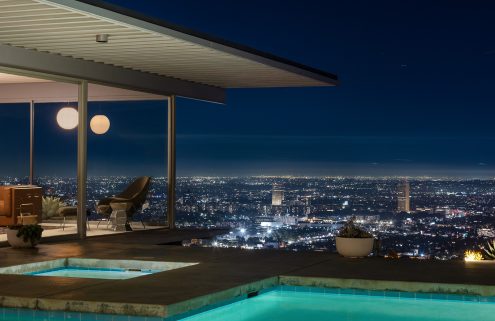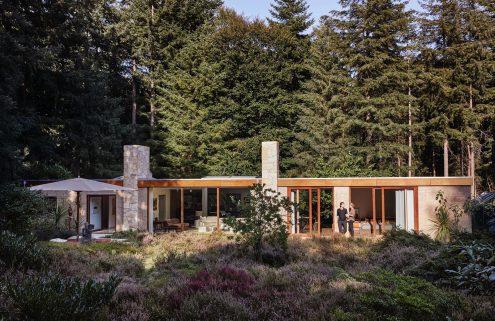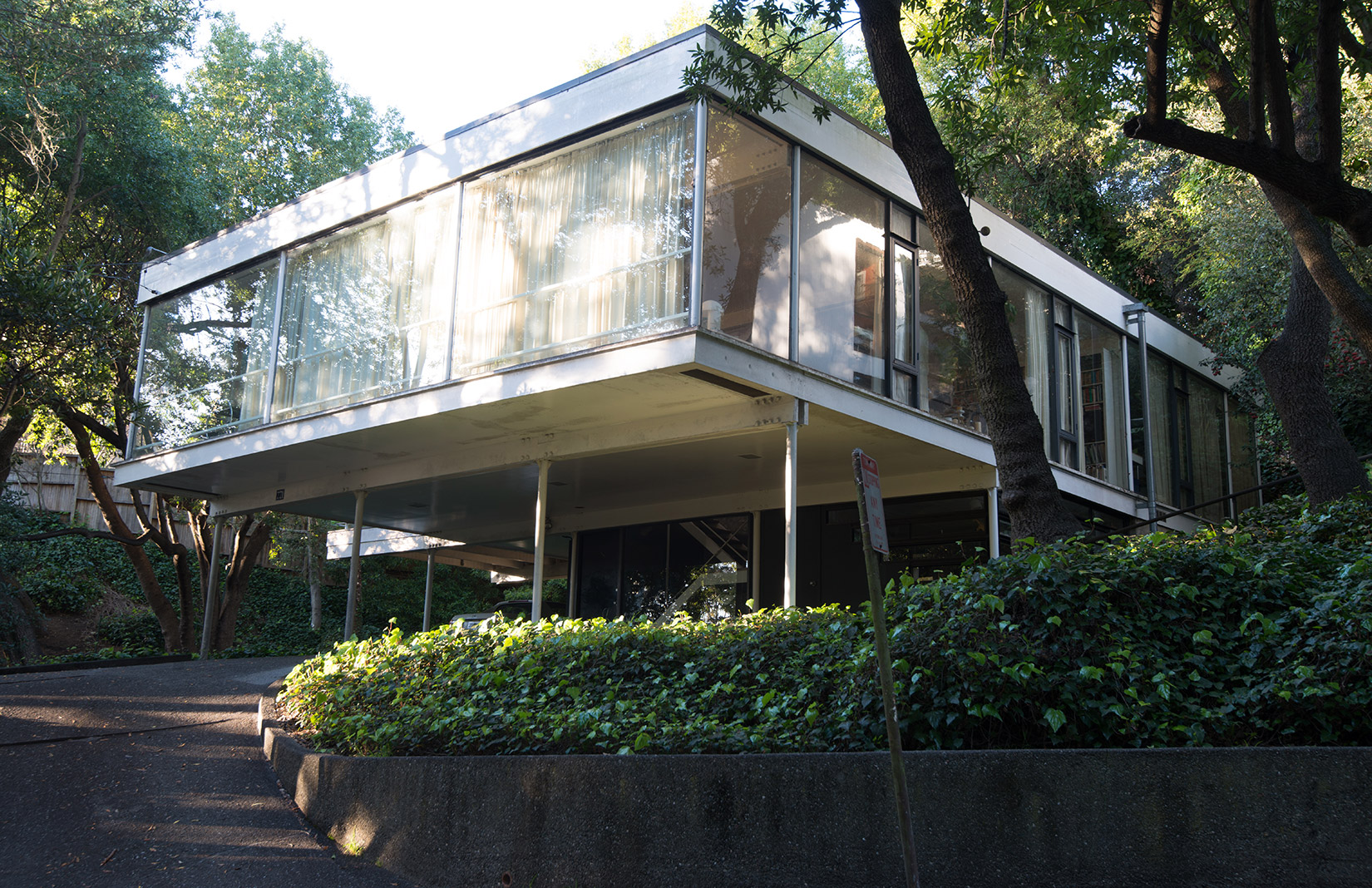
Modernist architecture might have arrived late to the San Francisco Bay Area in the 1930s, but once established it remained a leading design philosophy for more than 40 years.
The Bay Area’s Modernist buildings combine daring, structural technologies with eye-catching industrial materials and work in harmony with its beautiful land and seascapes.
This regional spin is celebrated in a new architectural map by Blue Crow, which plots 50 exceptional Modernist buildings in San Francisco, Oakland, Berkeley and beyond.
Explore eight outstanding landmarks.

Transamerica Pyramid in San Francisco by William Pereira, 1972
This pyramidal building – whose clean lines are broken by two wings containing elevator shafts, stairwells and windows – was initially disliked for its height and shape, but is now considered a symbol of San Francisco. The skyscraper has repeated bands on its four sides, and houses a beacon within the glass capped cubical at the top of its spire.
Photography: Jason Woods © Blue Crow Media

San Francisco Art Institute by Paffard Keatinge-Clay, late 1960s
Two shortened concrete pyramids, protruding at different angles towards the sky, form part of the roof of this Corbusian-style art school by English architect Paffard Keatinge-Clay. The SFAI’s conical skylights point northwards directing light into the studio area below, which is composed of 30-foot concrete structural bays with 20-foot high ceilings.
Photography: Jason Woods © Blue Crow Media

Olsen House in Berkley by Donald Olsen, 1954
Olsen created inviting living spaces inside his North Berkeley Hills home using the geometries and strict formality of the International Style. The stilted house has a Le Corbusier-esque white stucco exterior with bands of glazing that frame its woodland surroundings.
Photography: Jason Woods © Blue Crow Media
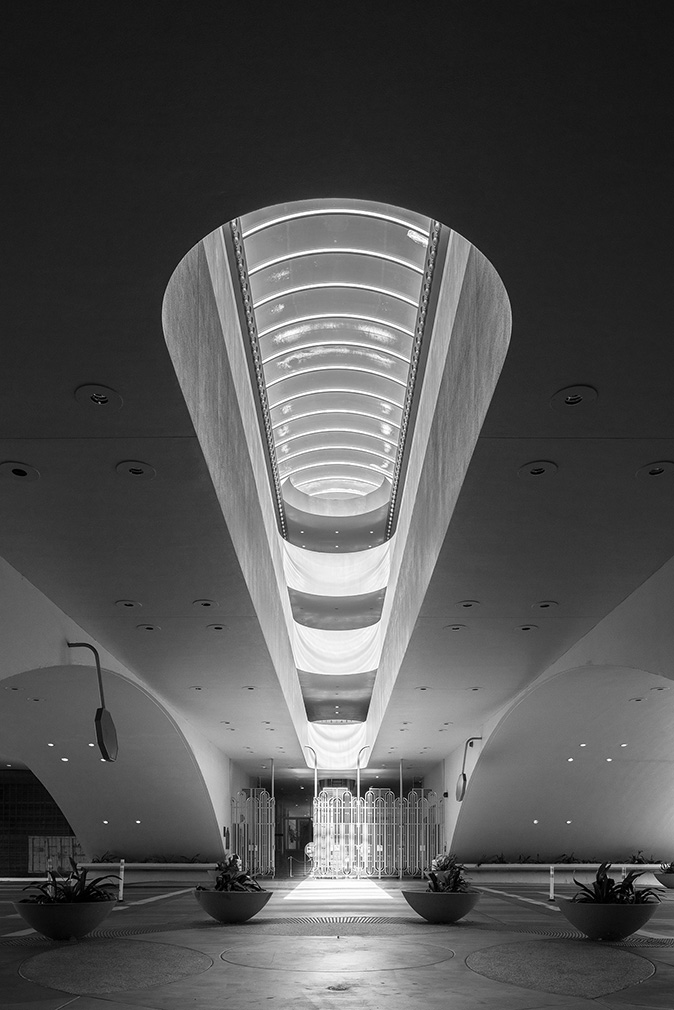
Marin County Civic Center in San Rafael by Frank Lloyd Wright, 1960
This Frank Lloyd Wright-designed campus of civic buildings is a fusion of futuristic and Islamic influences, with its flattened dome, gold tower, long blue roof and pink stucco walls. Shallow non-structural arches, decreasing in width with each storey, run along its main façades, while glazing brings light through elliptical atriums into the building.
Photography: Jason Woods © Blue Crow Media

Oakland Museum of California by Kevin Roche & John Dinkeloo, 1961-68
The roof of this sprawling museum is a terraced landscape of concrete planters, stairs and terraces that forms a five-acre public park in Oakland. Beneath the rooftop garden lies four connected buildings that open onto lawns, terraces, trellised passages and wide flights of stairs.
Photography: Jason Woods © Blue Crow Media
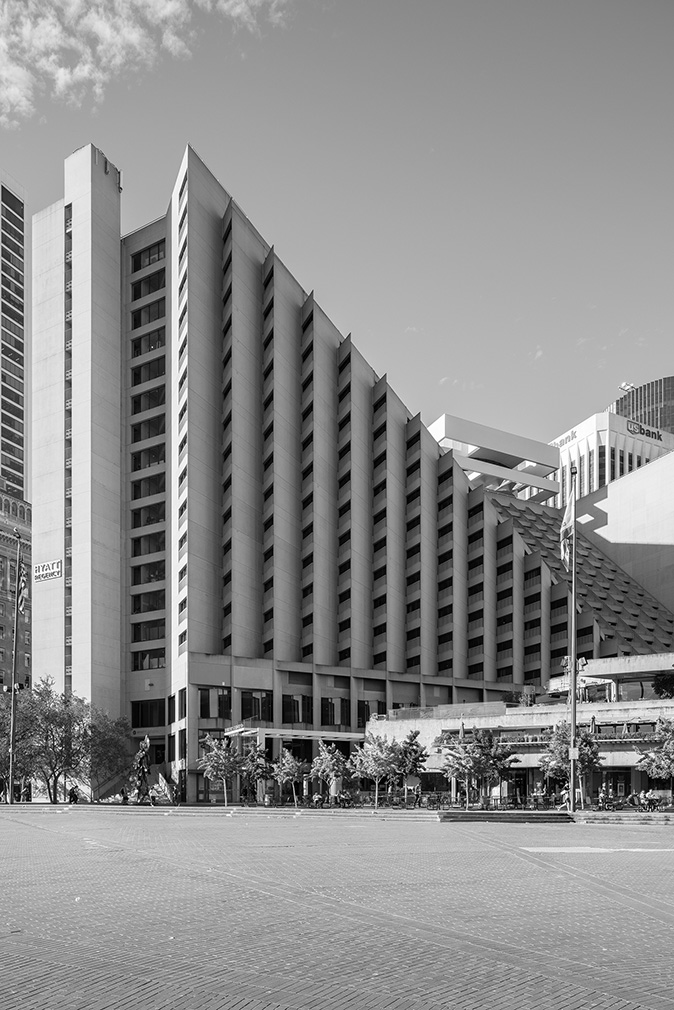
Embarcadero Center & Hyatt Regency Hotel in San Francisco by John Portman Jr, 1973
The dramatic neo-futuristic atrium of the Hyatt Regency Hotel has been captured in no less than four films. Surrounded by 15 stepped stories, it offers horizontal and vertical dynamism within its triangular open form. Tom Wolfe described John Portman Jr’s array of soaring futuristic hotel atriums as ‘Babylonian ziggurats’.
Photography: Jason Woods © Blue Crow Media

Former University Art Museum by Mario Ciampi, 1970
Described as the Bay Area’s most emphatic example of Brutalism, planes of cast concrete connect at sharp angles to create UC Berkeley’s former art museum. Cantilevered upper galleries, arranged in a spiralling fan shape, feature suspended balconies that jut into its hollowed-out central atrium space.
Photography: Jason Woods © Blue Crow Media

Alco Parking Garage by Ratcliff & Ratcliff, 1962
Alco Parking Garage expresses the optimism and ambition of post-war America with its bold form and sculptural finesse. The car park is formed of nine circular levels and is notable for its sweeping curves and symmetrical clean lines.
Photography: Jason Woods © Blue Crow Media

